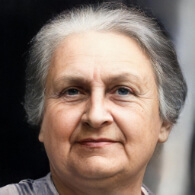Normalization (Montessori)
In Montessori education, Normalisation is a term used to describe the process by which children move from a state of disorder or disorientation to a state of order and self-discipline through spontaneous concentration on work freely chosen.[1] Maria Montessori observed that when children are given the freedom to choose their activities and are provided with materials suitable for their developmental needs, they exhibit certain characteristics of normal development, including a love of work, an attachment to reality, and a preference for silence and working alone. Such "normalised" children are often happier, enthusiastic, generous, and helpful to others, and their work choices reflect their developmental stage.
Montessori Quotes
- "Free choice is one of the highest of all the mental processes."[2]
- "The first essential for the child's development is concentration. The child who concentrates is immensely happy."[3]
Research and Critiques
- Pros: Normalisation aligns with psychological research that emphasizes the importance of intrinsic motivation, autonomy, and focused attention in learning. It fosters self-discipline and an intrinsic love for learning, essential skills for lifelong learning.[4]
- Cons: Critics argue that the concept of normalisation is too idealistic and that not all children may respond positively to this freedom. They caution that this approach may not work for all children, especially those with special needs or those who thrive with more structure.[5]
Comparisons to Other Methods
In contrast to traditional education models that often emphasize external rewards and punishments to manage behaviour, Montessori education encourages normalization, a process of internalizing discipline and love for learning through free choice and concentrated work.[6]
See Also
Glossary of Montessori Terms
The Glossary of Montessori Terms is a collection of specific terms and vocabulary that are related to the Montessori method of education, primarily focusing on the theory and practice for children aged 3 to 6. The jargon used by Montessori educators offers a unique insight into child development as discussed by Maria Montessori. The 'Montepedia Glossary of Montessori Terms' originated from a glossary that was compiled by the late Annette Haines from the Montessori Training Centre of St. Louis, at the request of Molly O'Shaughnessy from the Montessori Centre of Minnesota. The reason behind the creation of this glossary was to supplement O'Shaughnessy's lecture at the Joint Annual Refresher Course that took place in Tampa, Florida, in February 2001.[7] The glossary has since been expanded and updated with additional 'Montessori Terms'.
- 3-Hour Work Cycle
- Absorbent Mind
- Adaptation
- Adolescence
- Albums
- Advisor
- Analysis of Movement
- Casa dei Bambini
- Children of the Earth
- Children's House
- Choice
- Classification
- Concentration
- Concrete to Abstract
- Control of Error
- Coordination of Movement
- Cosmic Education
- Creativity/Imagination
- Cycle of Activity
- Development of the Will
- Deviations
- Didactic Materials
- Director
- Discipline from Within
- Earth Child
- Elementary Classroom
- Erdkinder
- Exercises of Practical Life
- False Fatigue
- Freedom of Choice
- Freedom within Limits
- Grace and Courtesy
- Great Stories
- Ground Rules
- Guide
- Help from Periphery
- Human Tendencies
- Imagination
- Independence
- Indirect Preparation
- Indirect Presentation
- Isolation of a Difficulty
- Intrinsic Motivation
- Job
- Kinderhaus
- Language Appreciation
- Language Acquisition
- Learning Explosions
- Materials
- Materialised Abstractions
- Mathematical Mind
- Maximum Effort
- Mixed Ages
- Montessori Materials
- Nido
- Montessori Materials
- Normalization
- Obedience
- Peace
- Personality
- Planes of Development
- Points of Interest
- Practical Life
- Phonemic Awareness
- Phonics Instruction
- Phonological Awareness
- Prepared Environment
- Presentation
- Primary Classroom
- Psychic Embryo
- Reading Comprehension
- Repetition
- Respect
- Self-Discipline
- Self-Regulation
- Sensitive Periods
- Sensorial Materials
- Simple to Complex
- Socialization
- Society by Cohesion
- Sound Games
- Three-Hour Work Cycle
- Valorisation
- Vocabulary Enrichment
- Work
Please help to translate this page into your local language
References
- ↑ Montessori, M. (1949). The Absorbent Mind. Clio Press.
- ↑ Montessori, M. (1912). The Montessori Method. Frederick A. Stokes Company.
- ↑ Montessori, M. (1949). The Absorbent Mind. Clio Press.
- ↑ Lillard, A. (2017). Montessori: The Science Behind the Genius. Oxford University Press.
- ↑ Egan, K. (2002). Getting it wrong from the beginning: Our progressivist inheritance from Herbert Spencer, John Dewey, and Jean Piaget. Yale University Press.
- ↑ Mooney, C. (2013). Theories of Childhood, Second Edition: An Introduction to Dewey, Montessori, Erikson, Piaget & Vygotsky. Redleaf Press.
- ↑ Haines, A. (2001). Glossary of Montessori Terms. Montessori Training Centre of St. Louis.
